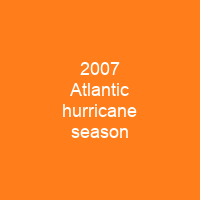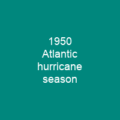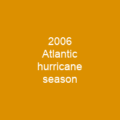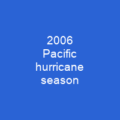The 2007 Atlantic hurricane season was a slightly above-average season. It produced 17 tropical cyclones, 15 tropical storms, six hurricanes, and two major hurricanes. Hurricanes Dean and Felix made landfall at Category 5 intensity, causing severe damage in parts of Mexico and Central America. The strongest hurricane, Dean, is tied for the eighth most intense Atlantic hurricane ever recorded. The United States was affected by five storms, although the storms were generally weak. Three storms directly affected Canada, although none severely.
About 2007 Atlantic hurricane season in brief

On April 3 a new forecast was issued, calling for a very active season of 17 storms, nine hurricanes and five intense hurricanes. On June 19 the Met Office issued a forecast of a potential for at least one major hurricane to affect the U.S. mainland. However, the report noted that while they predicted an active season, it was not suggesting that 2007 would be as active as the 2004 and 2005 seasons. It listed a 64 percent chance of at leastone major hurricane striking the East Coast, including the Florida peninsula, and a 40 percent chances of at at least a strike on the Gulf Coast from the Florida Panhandle westward. The average number of storms per season between 1950 and 2000 was 9.6 tropical storms, 5. 9 hurricane, and 2. 3 major hurricanes. A normal season, as defined by NOAA, has 9 to 12 named storms,. of which five to seven reach hurricane strength, and one to three become major hurricane. The team noted that sea surface temperatures were much higher than average and noted that the potential for a major hurricane at least at least the Florida Coast was increased to 74 percent; East Coast potential increased to 50 percent; the probability of the storm striking the Florida Peninsula rose to 49 percent. The season was one of only seven on record for the Atlantic with more than one Category 5 hurricane. It also was the second on record in which an Atlantic hurricane, Felix, and an eastern Pacific hurricane, Henriette, made landfall on the same day.
You want to know more about 2007 Atlantic hurricane season?
This page is based on the article 2007 Atlantic hurricane season published in Wikipedia (as of Dec. 05, 2020) and was automatically summarized using artificial intelligence.







